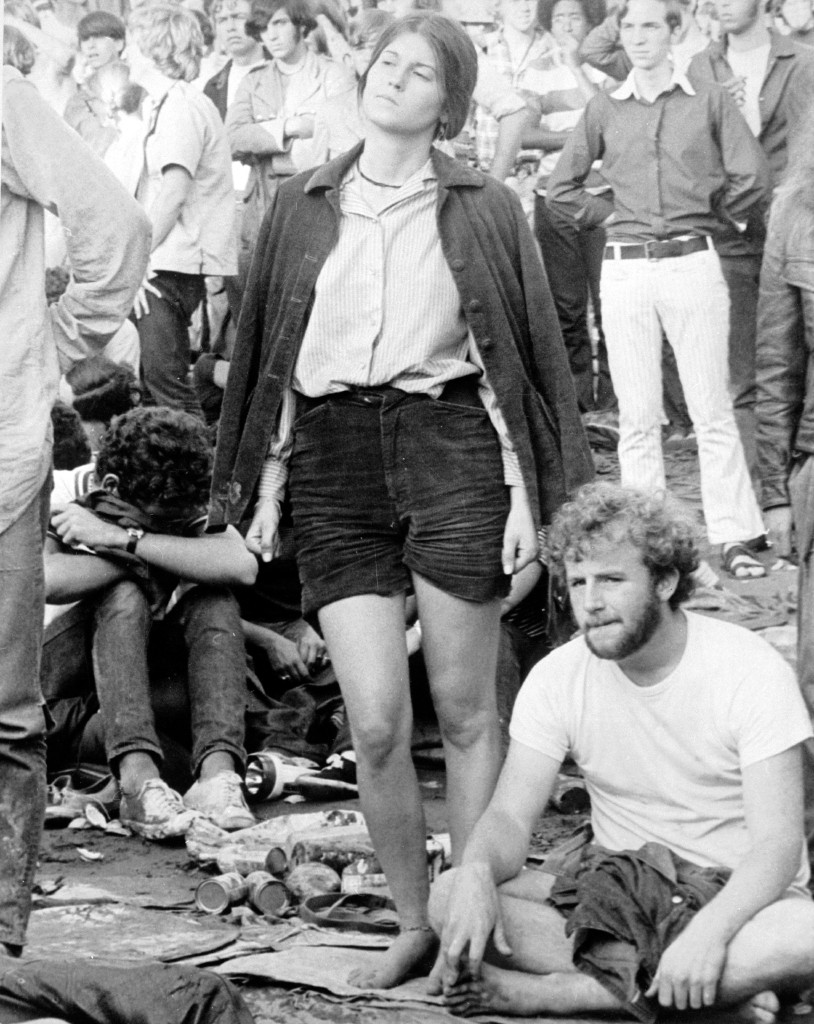By Karl J. Paloucek, ReMIND Magazine
From Tommy James and the Shondells’ “Crimson and Clover” finally ousting Marvin Gaye’s seven-week run on the top of the charts to Creedence Clearwater Revival having one of their best years with five songs in the Top 40 — including “Proud Mary” and “Bad Moon Rising” — to Diana Ross & the Supremes closing the year with “Someday We’ll Be Together,” 1969 will forever be remembered for its iconic hits but, more so, for letting the sunshine in and igniting the spirit of a new generation of hipsters. Let’s look at some of the cultural signposts of 1969 …
Woodstock Brings Peace & Love
The Woodstock Music & Art Fair — billed as “3 Days of Peace & Music” — was the most important musical event of the decade with the biggest lineup of musicians ever to appear at one concert. From Aug. 15-18, 1969, New York dairy farmer Max Yasgur allowed his 600-acre plot of land to be turned into the site for what would be the apex of the countercultural revolution of the ’60s. The festival boasted a now-legendary lineup that included Jimi Hendrix, Janis Joplin, Creedence Clearwater Revival, The Who, the Grateful Dead, Jefferson Airplane, Joe Cocker and Crosby, Stills, Nash & Young, among many others. Nearly 200,000 tickets were sold, but word of this not-to-be-missed event reached far and wide, and by Friday evening ticketing gates couldn’t handle the crowds, and the festival gates were thrown open as a free event, eventually admitting over 400,000 young people from across the country to its rain-soaked pastures.
Good intentions carried far at Woodstock, and for many in attendance, it was an unforgettable and life-changing experience.
In spite of torrential rains, the mud, the notorious brown acid and the unfortunate death of at least one hapless attendee who camped too close to a tractor, the weekend lodged itself in the public consciousness as the zenith of the youth movement — a symbol of what ideals, music and young people could do. It was a bright moment of hope, and those who were there and who could actually remember it would forever be touched by its magic.
Yasgur summed it up best when he came onstage on Sunday saying: “I’m a farmer. I don’t know how to speak to 20 people at one time, let alone a crowd like this. But I think you people have proven something to the world. … This is the largest group of people ever assembled in one place. … We had no idea there would be this size group. … The important thing that you have proven to the world is that a half a million kids can get together and have three days of fun and music, and have nothing but fun and music and may God bless you for it.”
The Beatles’ Final Performance
For many, the songs of John, Paul, George and Ringo are the indisputable soundtrack of the ’60s. The world had never seen anything like the public and media furor created by the Fab Four, and when the group made an unannounced live appearance on the rooftop of their London Apple Corps headquarters on Jan. 30, 1969, most fans didn’t realize it would be their final public performance. The 42-minute rooftop concert consisted of a mix of takes for the songs that would appear in the movie Let It Be — “Get Back,” “Don’t Let Me Down,” “I’ve Got a Feeling,” “One After 909” and “Dig a Pony.” Later in the year, while recording what would be the group’s final proper studio album, Abbey Road, on Aug. 20, 1969, the four Beatles entered the studio for what would be their last recording session all together. (A January 1970 session would take place, but without John Lennon present.) The group worked on vocal overdubs for the song “I Want You (She’s So Heavy)” at this session. In less than a month, the group would assemble at Apple Studios for a tumultuous meeting, and on Sept. 20, a discussion about the future of the group took a dark turn when Lennon allegedly declared, “I want a divorce” and “The group’s over, I’m leaving.” The Beatles would never come together again.
“Under My Thumb” At Altamont
In the same way that saying “Woodstock” conjures up images of peace and love, saying “Altamont” immediately brings up quite the reverse. A number of the same acts who appeared at Woodstock just months before were on the bill at Altamont Speedway Free Festival in Northern California on Dec. 6, 1969, including Jefferson Airplane, Santana and Crosby, Stills, Nash & Young, but it was the Rolling Stones for whom this event would become infamously synonymous. Legend has it that the Hells Angels had been brought on as security for $500 worth of beer — though official accounts dispute this. The many muddled explanations of what happened are, perhaps, testimony to the fact that things were not as they should have been. What is clear is that during the song “Under My Thumb,” an unruly crowd situation and poor security measures to deal with it resulted in the stabbing death of 18-year-old Meredith Hunter. Footage of the incident was inadvertently captured in the concert film Gimme Shelter, and the entire Altamont Speedway Free Festival quickly earned the reputation as having sounded the death knell of the hippie era.
Brought to you by the publishers of ReMIND magazine, a monthly magazine filled with over 95 puzzles, retro features, trivia and comics. Get ReMIND magazine at 70% off the cover price, call 1-855-322-8784 or visit remindmagazine.com. ©2018 ReMIND magazine

